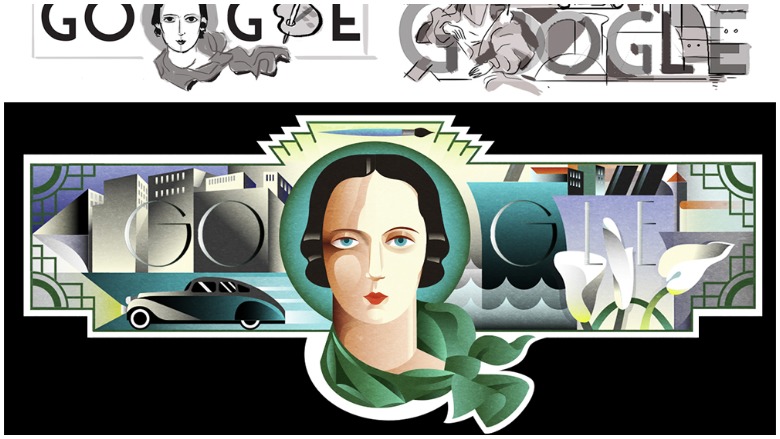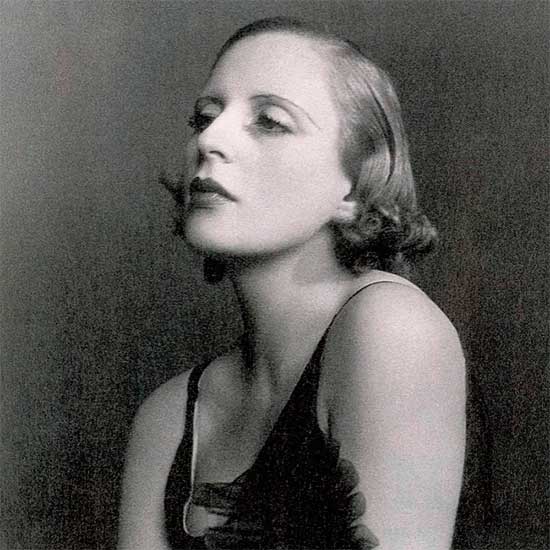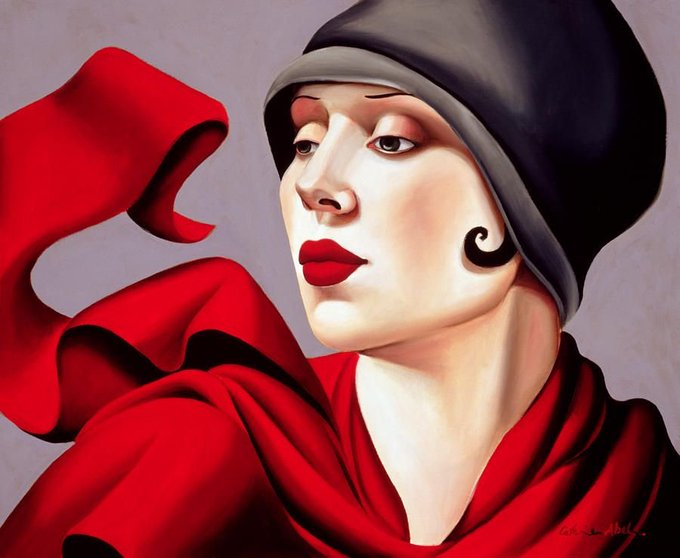
Tamara de Lempicka, the Polish painter who made “a career out of subverting expectations” is the subject of a Google Doodle honoring her 120th birthday.
She “developed her distinct style in the Art Deco era,” Google wrote. The Google Doodle runs on May 16, 2018. “I live life in the margins of society, and the rules of normal society don’t apply to those who live on the fringe,” Google quoted her as once saying.
Tamara de Lempicka’s vibrant portraits, popular with celebrities, were considered erotic in their day, often consisting of stylized nudes and aristocrats. She is known for capturing the spirit of the “Roaring ’20s” especially.
Here’s what you need to know:
1. Tamara de Lempicka Was Polish in Heritage & Gained Her Love of Art During a Trip to Italy
It was a trip to Italy with her grandmother that inspired de Lempicka toward a career in art. She began painting before she hit her teenage years. “The daughter of a Russian Jewish lawyer and a Polish socialite, she made her first portrait of her younger sister at the age of 10,” according to The Sun.
She was born in Warsaw, Poland in 1898. “Lempicka’s love for art started at an early age. As a young child, she spent a summer in Italy with her grandmother, who inspired her love for great Italian Renaissance painters,” Google reported.
According to a website in her name, de Lempicka was born into a wealthy family as “her father was a Polish lawyer, her mother, the former Malvina Decler, a Polish socialite. Maria was the middle child with two siblings. She attended boarding school in Lausanne, Switzerland, and spent the winter of 1911 with her grandmother in Italy and the French Riviera.” The name of her father was Borys Gurwik-Gorski.
Culture.pi says that some believe de Lempicka was born in Moscow. “Her father disappeared from Tamara’s life when she was only a few years old and the circumstances of his leaving remained the artist’s painful and deeply hidden secret. She claimed her parents got divorced, but it is believed that Borys Gorski committed suicide,” the site noted.
According to Art Directory, “Her actual name was Maria Gorski, she was the daughter of a bourgeois family.”
2. She Met Her Husband in Russia & Lived Through the Russian Revolution
It was in Russia that de Lempicka came of age and met her first husband.
“Upon her parents’ divorce, she was sent to live with her wealthy aunt in Russia. It was during this time that Lempicka was exposed to the lives of nobility as well as her future husband, Tadeusz Lempicki,” Google reported. The Guardian reports that she fell in love with him at age 14, and that he was a lawyer who was a nobleman.
“Shortly after their marriage, the Russian Revolution began and Lempicka, now a refugee, moved from St. Petersburg to Paris. It was there, at the height of post-cubism, where she began her formal artistic training under the influence of French painters Maurice Denis and André Lhote,” according to Google. The Guardian reports that she was arrested but her husband was able to get her released.
The move to Paris would prove influential to de Lempicka’s artwork. According to Art Directory, “the Paris art scene offers her the opportunity to get in contact with Paris’s upper class. Up until 1925 she pretends to be a male artist by using the male form of her last name to sign her paintings.”
Lempicka and her husband had a daughter named Kizette, her only child.
3. Lempicka Was Known for Her ‘Exquisite Tributes’ to the 1920s
Many artists capture a decade and for Lempicka that decade was the 1920s, which was where she found her inspiration in art. According to The Art Story, “Tamara de Lempicka was the lone traditional easel painter in the entirety of the Art Deco style. Her sources of inspiration ranged dramatically.”
“Internalizing her grandiose and decorative surroundings, Lempicka went on to produce exquisite tributes to the Roaring Twenties in her own unique way, utilizing a blend of late neoclassical and refined cubist styles in her art. Her affinity for the luxurious also led her to fixate on portraits of artists, stars, and aristocrats, which coupled with her considerable charm and exotic lifestyle, lit up the art world and social circles of the period,” Google reported.
Matthew Cruickshank created the Google Doodle, and he mentioned the 1920s when explaining the influence of de Lempicka.
“Few artists embodied the exuberant roaring twenties more than polish artist Tamara de Lempicka. Her fast paced, opulent lifestyle manifests itself perfectly into the stylized Art-Deco subjects she celebrated in her paintings,” he said, according to Google. “I first encountered Lempicka’s work at her Royal Academy show in London, 2004. I was struck by the scale and skill of her paintings coupled with her life (as colorful as her work!). I chose to place a portrait of Lempicka in my design with accompanying motifs evocative of the roaring 20’s and 30’s. It’s no easy feat to recreate any artists work – but I hope to have done so here.”
4. Lempicka Was Known as the Baroness With a Brush & Was Bisexual
Lempicka divorced her first husband in 1928, according to The Sun, becoming the mistress of Baron Raoul Kuffner. By 1934, they were married after his wife died, and she gained the nickname, “The Baroness with a Brush,” the Sun reported.
She was “a bisexual” who “made bold, liberated female sexuality the lynchpin of her art,” according to The Art Story. One of her most famous portraits was “Tamara in the Green Bugatti,” which is a self-portrait of the artist, The Guardian reports.
According to The Guardian, “De Lempicka depicted the shifting morals of a Paris where nothing was precisely what it seemed. She lived and worked on the bisexual fringes of a society where there were no rules beyond the demands of style and entertainment.” The Guardian described her personality as embodying a workaholic ethic, “permitting interruptions in her nine-hour painting sessions only for such necessities as champagne, a massage and a bath.”
5. Lempicka Moved to the United States After Painting Celebrities in the 1930s
In the 1930s, according to the Sun, the artist took to painting celebrities. “During this period she painted the likes of King Alfonso XIII of Spain and Queen Elizabeth of Greece,” the news site reported.
She eventually moved to the United States but died in Mexico on March 18, 1980 at the age of 81. In the United States, Lempicka drew the interest of Hollywood stars, living in Beverly Hills and New York for a time. She also lived in Houston, Texas.

